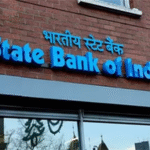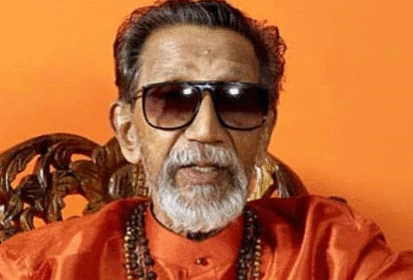Supreme Court’s Landmark Ruling on Voter ID Proofs in Bihar — A Deep Dive Into the Verdict and Its Impact
Democracy at the Crossroads
India, the world’s largest democracy, thrives on the strength and integrity of its electoral process. Every five years, and often more frequently, citizens line up outside polling booths across the nation to cast their votes — a simple act that echoes centuries of struggle for freedom and self-governance.
However, behind this routine democratic exercise lies an elaborate and often controversial framework: the voter list. Inaccurate voter rolls, exclusion of marginalized communities, and identity verification issues have long plagued elections in various states, none more hotly debated recently than Bihar.
In a landmark moment, the Supreme Court of India on July 8, 2025, ruled that while it would not halt the ongoing revision of Bihar’s voter list, the Election Commission of India (ECI) must accept Aadhaar and ration cards as valid forms of identity proof for voter registration. The court’s observation came in response to growing concerns about exclusion, access, and voter disenfranchisement, especially among the poor and rural populations.
This article — divided into multiple comprehensive parts — explores the legal, political, and social implications of this verdict in detail. From the background of the petition to the potential impact on future elections, we examine the full scope of what this means for Indian democracy.
Background — Why Was Bihar’s Voter List Revision Challenged?
1.1 The Petitioners’ Argument
The challenge to Bihar’s voter list revision was brought by a group of concerned citizens and social activists, who raised red flags over alleged irregularities in the ECI’s methodology. Their concerns included:
- Lack of transparency in how deletions from the voter list were being carried out.
- Alleged non-inclusion of marginalized communities and migrant workers.
- Heavy reliance on limited forms of ID, leading to exclusion of eligible voters.
They approached the Supreme Court seeking an immediate stay on the revision process, arguing that proceeding without corrective action would result in irreparable harm to democratic rights.
1.2 The ECI’s Position
The Election Commission of India, on the other hand, argued that:
- The revision process was in line with its constitutional mandate.
- It had already issued guidelines for identity verification and public hearings.
- Suspending the process mid-way would cause disruption to electoral timelines, especially with state elections around the corner.
The Supreme Court’s Observations and Ruling
2.1 No Stay on the Revision
Chief Justice DY Chandrachud, leading the bench, declined to impose a stay on the revision process. The court was cautious not to overstep the ECI’s constitutional autonomy, stating:
“The voter list is a living document — dynamic, not static. Interference must be balanced with institutional independence.”
2.2 Aadhaar and Ration Card Accepted as Voter ID Proof
However, in a critical observation, the court directed that Aadhaar and ration card should be accepted as valid forms of identification for those seeking to enroll or correct entries in the voter list. This instruction was aimed at ensuring that no eligible citizen is denied the right to vote due to the absence of conventional voter ID cards or more formal documents like passports or driver’s licenses.
“Democracy thrives not merely on elections, but on inclusive elections,” the bench remarked.
Legal Significance of the Verdict
3.1 Reinforcing Electoral Inclusivity
By allowing Aadhaar and ration cards, the Court reaffirmed the principle that documentation should not be a barrier to enfranchisement. This is especially vital in a country where millions, particularly in rural or economically backward regions, may lack access to government-issued photo ID beyond ration cards.
3.2 Judicial Restraint with Democratic Sensitivity
While the court refrained from staying the ECI’s revision process, it asserted its role as a constitutional watchdog by ensuring that no citizen is unjustly excluded. This balance between restraint and redressal reflects the maturing jurisprudence around electoral rights in India.
Bihar’s Electoral Landscape — A Tense Battleground
4.1 Why Bihar?
Bihar has long been a politically volatile and socially stratified state. It is often considered a testing ground for electoral practices, given its:
- High population density
- Large rural electorate
- Prevalence of caste-based politics
- Presence of migrant and economically vulnerable populations
Any changes to the voter list in Bihar have a direct impact on electoral outcomes, which in turn affect national political strategies.
4.2 Political Reactions
- Opposition parties in Bihar have hailed the court’s order on Aadhaar and ration cards, claiming it as a partial victory for electoral justice.
- The ruling Janata Dal (United)-BJP alliance, while welcoming the refusal to halt the revision, emphasized the importance of “cleaning up” the voter list.
This dual reaction highlights the sensitive nature of electoral data — both sides are eager to frame the ruling to their advantage.
The Human Side — Voices from the Ground
5.1 Rani Devi, 43, Muzaffarpur District
“They said my name was not on the list. I showed my ration card, but they wanted something else. Now, maybe I can vote again.”
For citizens like Rani, this ruling is not a legal technicality — it is a restoration of their political identity.
5.2 Imran Ali, 27, Patna
“I moved back from Surat during COVID. I had no voter ID, just my Aadhaar. I was told I cannot register. This decision gives me hope.”
The migrant worker population, especially those displaced during the pandemic, has faced systematic disenfranchisement. The court’s ruling may reverse that trend.
India’s Long Battle with Voter Identification
The concept of voter identification in India has evolved significantly since the first general elections in 1951–52. For decades, India functioned without photo-based voter IDs, relying primarily on manually compiled voter rolls and rudimentary ID verification.
6.1 Evolution of Voter Identification
| Year | Development |
|---|---|
| 1951–1989 | Voters identified using basic government records — ration cards, property tax slips, or affidavits. |
| 1993 | Elector’s Photo Identity Card (EPIC) introduced by the ECI to reduce impersonation. |
| 2008 | The ECI mandated photo voter slips during elections. |
| 2015–16 | ECI allowed linking Aadhaar to voter ID databases under the National Electoral Roll Purification and Authentication Programme (NERPAP). |
| 2021 | The Election Laws (Amendment) Bill allowed voluntary Aadhaar linking with voter IDs. |
| 2025 | SC clarifies Aadhaar and ration card can serve as valid ID proofs in Bihar’s voter list revision. |
The Supreme Court’s latest verdict is just the latest milestone in a story shaped by technology, governance, and citizen inclusion.
The Aadhaar Controversy — Identity vs Privacy
7.1 What is Aadhaar’s Legal Status?
Aadhaar, India’s 12-digit biometric identity project, has been celebrated for enabling access to government services and financial inclusion. However, it has also faced criticism for:
- Privacy violations
- Exclusion errors
- Potential surveillance
In 2018, the Supreme Court upheld the constitutional validity of Aadhaar in Justice K.S. Puttaswamy v. Union of India, but imposed strict limits on its mandatory use, especially in areas not backed by legislation.
7.2 Aadhaar and Voting Rights: A Tense Equation
Critics have long feared that linking Aadhaar to voter IDs could lead to:
- Mass deletion of names due to mismatches in data
- Disenfranchisement of marginalized groups
- Duplicate deletions without notice
In Telangana and Andhra Pradesh (2015–16), such deletions led to a public outcry when over 30 lakh voters were dropped during the Aadhaar verification phase.
That’s why the Supreme Court’s Bihar ruling is so crucial: it doesn’t mandate Aadhaar for voting, but accepts it as a valid document, giving millions of citizens an alternative route to assert their franchise.
Ration Cards — Document of Survival, Now a Tool of Democracy
8.1 More Than Just Food Security
The ration card — originally a food distribution document — has become a de facto identity card for millions of Indians living below the poverty line.
It is especially vital in rural and tribal belts where:
- No passport or driver’s license exists
- Birth certificates are rare
- Aadhaar enrollment faces technical gaps
Recognizing ration cards as valid for voter ID verification is an inclusive step. It acknowledges the realities of India’s informal population and ensures that poverty doesn’t equal political invisibility.
8.2 Inclusion vs Exploitation
Critics argue ration cards can be politicized, often distributed through party-linked ration shops or welfare networks. However, when combined with digital authentication and human oversight, they empower millions.
The SC’s nod to ration cards is also symbolic: a document of dependency transformed into one of citizenship.
What This Means for the 2025–26 Electoral Cycle
9.1 Bihar Assembly Elections Ahead
The timing of this verdict is politically explosive. Bihar is scheduled for state assembly elections in late 2025. Here’s what the ruling means for the electoral math:
- Migrant workers returning home post-COVID and rural poor will now find it easier to get on the voter rolls.
- Caste-based parties may push harder for last-mile voter mobilization using Aadhaar and ration card outreach drives.
- Urban voters may experience minimal disruption, but the rural vote bank could significantly shift depending on how effectively voter registration is mobilized.
9.2 Ripple Effect on Other States
Several states — Uttar Pradesh, Jharkhand, Madhya Pradesh — are watching this case closely. With legislative elections due in the next 12–18 months, the court’s verdict may:
- Set a template for voter ID policy during revisions.
- Lead to more petitions demanding inclusion of alternate documents.
- Encourage activists to challenge mass deletions or ID mismatches in court.
Political Narratives Around Identity and Voting
10.1 BJP’s Position
The BJP, which governs both Bihar (in alliance) and at the Centre, has long advocated for “cleaning up the voter rolls”, citing issues like:
- Ghost voters
- Bogus duplication
- Cross-border voting in sensitive regions
While the SC’s refusal to halt revision plays in its favor, the allowance of Aadhaar and ration cards also challenges any narrative of elite control over access.
10.2 Opposition Response
Opposition parties such as RJD, Congress, and Left fronts have immediately embraced the judgment as a “partial people’s victory.”
“This is not just about IDs. It’s about the right of every poor, rural, and backward-class voter to be counted,” said RJD spokesperson Tejashwi Yadav.
Expect to see mass voter registration drives and legal awareness campaigns launched across Bihar and other key states in response.
Public Sentiment — What Voters Think
A Quick Sample (Voices from Bihar)
- Sunita Kumari, 52, Vaishali: “They removed my name last time. I had only ration card. Now I feel like my vote matters again.”
- Ramesh Paswan, 21, Gaya: “I have Aadhaar but no other ID. I was told I couldn’t vote. This news makes me feel included.”
From these stories, it’s clear the verdict is about more than documentation — it’s about democratic dignity.
onstitutional Framework of Voting Rights in India
Unlike countries such as the United States, where voting is considered a fundamental civil right, India classifies the right to vote as a statutory right, not a fundamental right.
12.1 Article 326 — Universal Adult Suffrage
India’s voting system is founded on Article 326 of the Constitution:
“The elections to the House of the People and to the Legislative Assembly of every State shall be on the basis of adult suffrage…”
This guarantees voting rights to all citizens above 18 years, unless disqualified under election laws. However, it is not justiciable as a fundamental right — meaning, it cannot be directly enforced under Article 32 (the constitutional article that empowers individuals to approach the Supreme Court in case of fundamental rights violations).
12.2 Key Judicial Interpretation
In Jyoti Basu v. Debi Ghosal (1982), the Supreme Court declared:
“Right to vote is neither a fundamental right nor a common law right. It is purely a statutory right.”
However, the court has evolved its position by recognizing that denial of this right arbitrarily can violate the right to equality under Article 14 and the right to life under Article 21, thus offering indirect constitutional protection.
12.3 The Bihar Verdict’s Constitutional Signal
Although the July 2025 verdict didn’t redefine the legal status of voting rights, it reaffirmed judicial concern for democratic inclusion. By nudging the ECI to accept Aadhaar and ration cards, the court essentially said: if the law enables voting, the process must not exclude.
Election Commission of India — Referee, Regulator or Ruler?
The Role of the Election Commission
The Election Commission of India (ECI), an autonomous constitutional body under Article 324, is tasked with conducting free and fair elections. But over the years, it has faced increasing scrutiny regarding:
- Transparency
- Responsiveness to voter complaints
- Independence from executive pressure
13.1 Praise and Criticism
The ECI has been praised for:
- Conducting elections for 950+ million voters.
- Ensuring peaceful transitions of power in volatile states.
- Deploying technology (EVMs, VVPATs, mobile apps).
But it has also been criticized for:
- Opaque voter list deletions
- Failure to act swiftly on poll violations
- Delays in electoral roll updates
13.2 In the Bihar Case
In the Bihar voter list revision case, the ECI stood firm on:
- Its authority to revise electoral rolls.
- Following standard procedures via Booth Level Officers (BLOs).
- Arguing that disruptions could derail scheduled electoral timelines.
The SC agreed — but with conditions, primarily by asking the ECI to broaden the definition of acceptable ID.
Are Booth Level Officers Equipped to Handle This?
14.1 Who are BLOs?
Booth Level Officers are the frontline officials responsible for:
- Verifying voters on the ground.
- Accepting documents for registration or deletion.
- Informing citizens of list changes.
But their functioning often faces severe challenges:
- Inadequate training
- Political pressure
- Technical errors with Aadhaar data
- Lack of digitization in rural areas
14.2 Post-Verdict Complications
After the court’s directive:
- BLOs will now need to accept multiple ID formats, not just voter ID cards.
- Risk of data mismatches increases, especially in remote areas.
- Increased public interactions could overwhelm under-staffed teams.
The ECI must now urgently train BLOs and issue clear guidelines on document acceptance standards.
India and the World — A Comparative View of Voter Identification
Global Voter ID Norms — What Can India Learn?
15.1 The Global Picture
| Country | Voter ID Required? | Acceptable Documents |
|---|---|---|
| USA | Varies by state | Driver’s license, passport, social security card |
| UK | Yes (as of 2023) | Passport, driving license, Oyster card |
| Germany | Yes | National ID card, passport |
| Canada | Yes | 50+ options including utility bills |
| India | Yes | Voter ID, Aadhaar, ration card, others (varies) |
India’s challenge isn’t about whether ID is needed, but which IDs are truly inclusive.
15.2 Aadhaar vs Voter ID — The Global Dilemma in Indian Context
- Aadhaar is biometric-based and digitally linked — useful for verification.
- But Aadhaar is not proof of citizenship, just residency.
- Voter ID cards are citizenship-based, but often poorly updated.
The Supreme Court’s balanced approach recognizes this gap — allowing Aadhaar and ration cards for access while maintaining ECI oversight on eligibility.
15.3 Innovation and Caution
India has pioneered some of the most ambitious voter tech solutions globally — from EVMs to electoral roll software. Yet, success lies in inclusion, not just innovation.
“A secure vote means nothing if the voter never reaches the booth.”
— Comment from a retired CEC in response to the SC verdict
Also Read : Neena Gupta Reveals 7 Key Insights on Real-Life Love vs Movie Romance in Metro…In Dino








